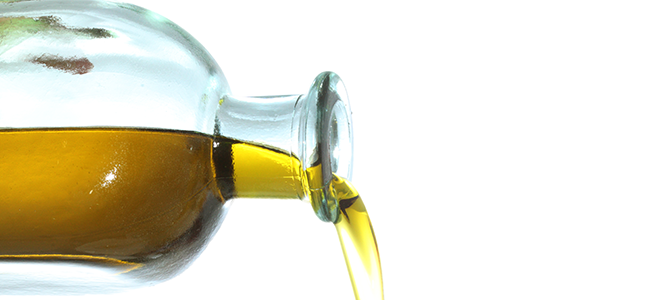
Not all fats are bad for you. Good fats, like those that come from vegetables, nuts, seeds, and fish, are an essential source of energy. Polyunsaturated and monounsaturated fats, for example, are two types of good fats that have been shown to improve blood cholesterol levels and reduce the risk of heart disease. These fats are liquid at room temperature and tend to stay that way even when chilled (though monounsaturated fats become cloudy or semi-solid when cold).
You probably have these heart-healthy fats in your kitchen pantry right now. Healthy cooking oils are a great source of polyunsaturated and monounsaturated fats. Below, Atkins has compiled a list of the best cooking oils (plus the healthiest oil for frying) to use in your holiday recipes.
Canola Oil
This heart-healthy oil is made from the seeds of the canola plant. Canola oil is one of the healthiest cooking oils, as it contains a higher amount of omega-3 fatty acid than most other oils; omega-3 fats lower blood pressure and heart rate. It’s also great for sautéing, baking, and marinating.
Olive Oil
One of the most popular cooking oils, olive oil is a staple in many households. Opt for extra-virgin olive oil, which is made from the first pressing of olives. Extra-virgin olive oil is high in antioxidants called polyphenols, which offer additional heart-healthy benefits. Use olive oil to sauté vegetables or combine with balsamic vinaigrette for an easy salad dressing.
Peanut Oil
Made from unshelled peanuts, peanut oil contains heart-healthy phytosterols—plant fats associated with lower cholesterol and cancer prevention. Peanut oil is well suited for deep frying, as well as roasting and sautéing, thanks to its high smoke point.
Grapeseed Oil
Like the name suggests, grapeseed oil is extracted from the seeds of grapes. It’s high in polyunsaturated fats and vitamin E. This versatile oil also has a high smoke point, so it’s great for sautéing, stir-frying, or roasting.
Coconut Oil
Coconut oil is rich in saturated fats. It also helps control blood sugar and facilitates the absorption of calcium by the body. With a subtle coconut flavor, coconut oil makes a great substitute for butter when baking. It also works well if you’re cooking recipes with coconut flavoring, such as Garlicky Coconut Prawns.
Palm Shortening
Palm shortening is created by removing a portion of saturated fats from palm oil. It makes an excellent non-dairy substitute for butter. Palm shortening remains stable at high temperatures, so it’s ideal for cooking. You also can swap in palm shortening for Crisco (or any other hydrogenated or partially hydrogenated fat) in moderation.

